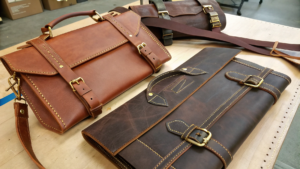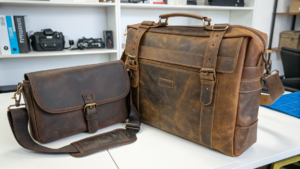Custom PU Leather Notebooks: More Than Just a Gift?
In our fast-paced digital world, a custom PU leather notebook is more than just a place to write. It is a symbol of focus and intention. Are you looking for a gift that truly stands out?
Custom PU leather notebooks are important because they offer a blend of sophistication, durability, and ethical consideration, making them ideal for personal use or corporate gifting. They provide a tangible, tactile experience in a digital age, enhancing brand presence and communicating a commitment to quality and mindful design.
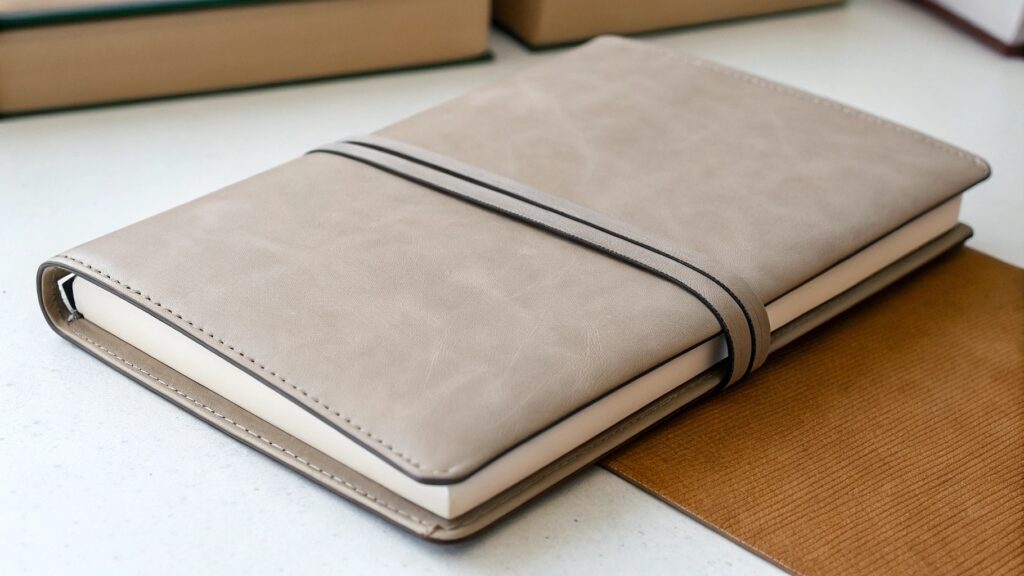
I've seen how a physical object can hold more meaning than something digital. A custom PU leather notebook is one such item. It feels good to hold. It tells a story. This makes it a powerful tool for your brand.
What Is the Disadvantage of PU Leather?
Considering PU leather but have concerns? Wondering about its limitations? Let's look at the downsides of PU leather.
The main disadvantage of PU leather is its limited durability1 compared to genuine leather, as it can be prone to cracking, peeling, or degrading over time, especially with heavy use or exposure to extreme conditions. It also lacks the natural breathability2 and unique patina development of real leather.
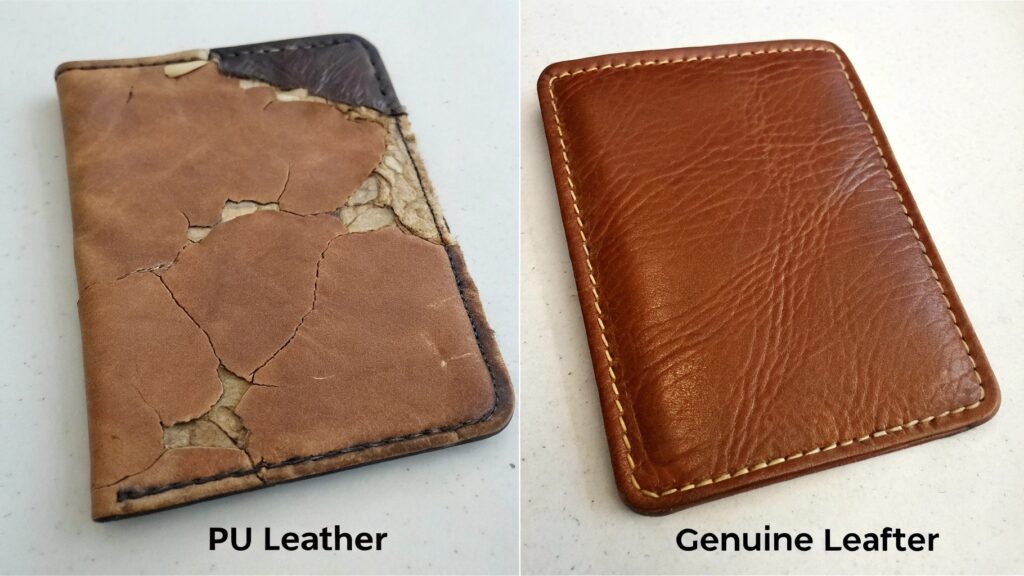
When I first started working with different materials, I learned that everything has its trade-offs. PU leather is a great alternative to real leather for many reasons, but it is not perfect. Its biggest drawback is how long it lasts. Real leather can last for decades, often looking better with age. PU leather, because it is synthetic, does not age in the same way. It can start to crack or peel, especially in areas that bend a lot, like the spine of a notebook. This peeling happens because the layers that make up the PU leather can separate. Also, unlike genuine leather, which can breathe, PU leather is less breathable. This might not be a big issue for a notebook, but it is something to consider for other products. It also does not develop that rich, unique look, called a patina, that real leather gets over time.
| Disadvantage | Description | Impact on Product |
|---|---|---|
| Durability | Prone to cracking and peeling, especially at stress points. | Shorter lifespan than genuine leather, can look worn faster. |
| Breathability | Less breathable than natural leather. | Can feel less premium in some applications, no "aging" effect. |
| Patina Development | Does not develop a unique aged look like real leather. | Lacks the character and history that genuine leather gains. |
| Heat Sensitivity | Can become sticky or degrade under high heat. | Requires careful storage, might not suit all environments. |
Is PU Leather the Same as Faux Leather?
Confused by all the terms? Wondering if PU leather is just another name for fake leather? Let's clarify the difference.
Yes, PU leather is a type of faux leather, which is a general term for any material designed to mimic genuine leather without using animal products. Specifically, PU leather is made by applying a layer of polyurethane to a base material, giving it a leather-like appearance and feel.
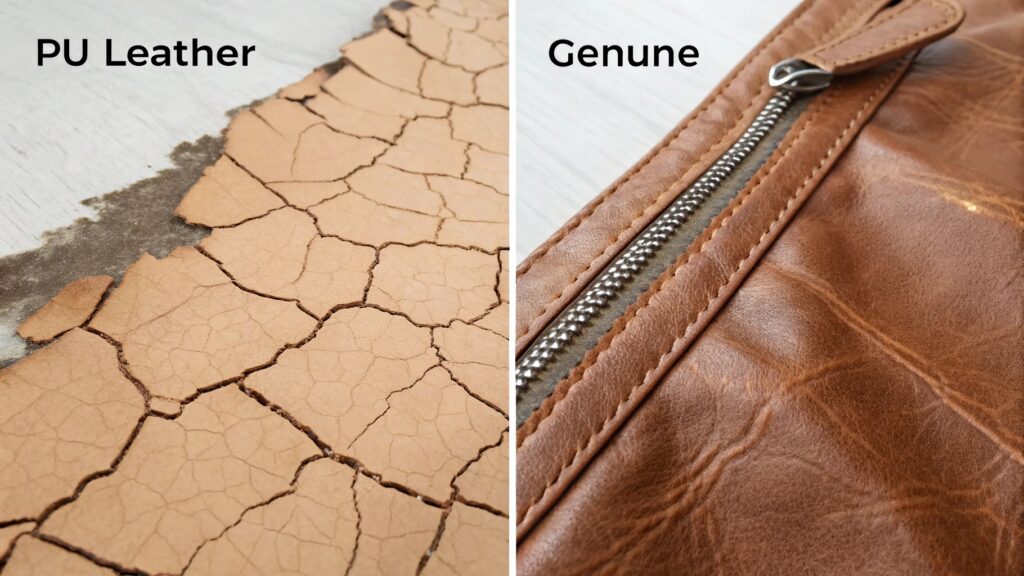
When I talk about custom notebooks, I often hear people use terms like "faux leather" and "vegan leather." It can get a bit confusing. From my experience, PU leather is indeed a specific kind of faux leather. Think of "faux leather" as the big umbrella term. It covers all materials that look like leather but are not from animals. Under that umbrella, you have different types. PU leather is one of the most common and widely used. It is made by coating a fabric base, like cotton or polyester, with a flexible polymer. This polymer is called polyurethane. This coating gives it that smooth, often grain-like texture that makes it look and feel like real leather. Other types of faux leather might use PVC (polyvinyl chloride). However, PU leather is generally preferred because it is softer and more flexible. It is also considered more environmentally friendly than PVC. So, when someone asks if they are the same, I say yes, PU leather is a member of the faux leather family.
Does PU Leather Rip Easily?
Concerned about the strength of PU leather? Wondering if your notebook will last? Let's discuss the tear resistance3 of PU leather.
PU leather generally has good tear resistance for everyday use, but it is not as strong as genuine leather and can be more susceptible to tearing, especially along seams or edges, under extreme stress or prolonged wear. Its durability depends heavily on the quality of the polyurethane coating and the base fabric.
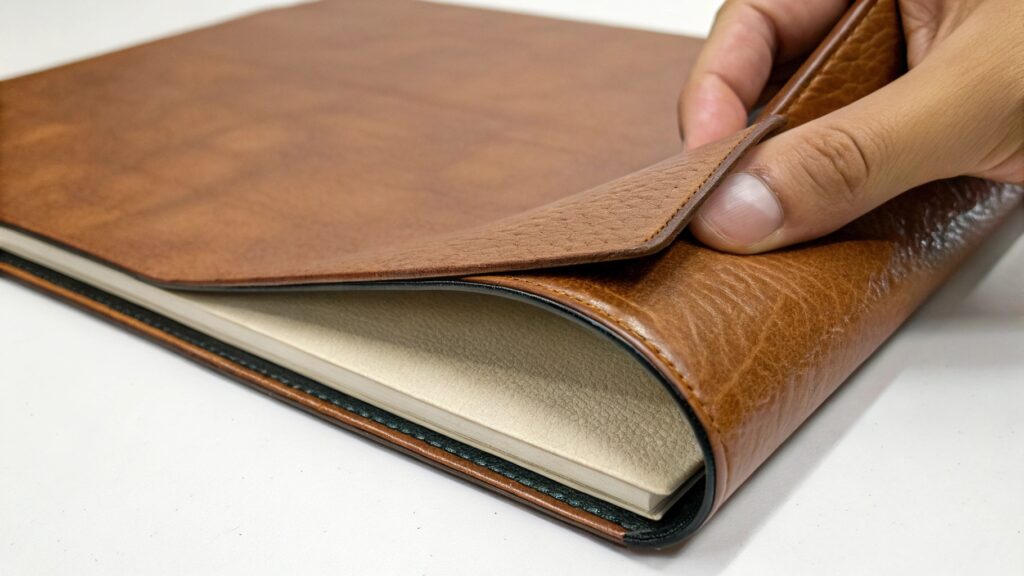
I have handled countless notebooks made from various materials, and the question of durability always comes up. While PU leather feels sturdy, it's important to understand its limits. For typical use—carrying a notebook in a bag, writing in meetings, daily desk use—PU leather holds up quite well. It resists minor scratches and splashes better than some other materials. However, if it's subjected to sharp objects, extreme pulling, or constant friction in one spot, it can rip. I've noticed that rips often start at the edges or where the material is stitched, as these are points of stress. The quality of the PU also plays a big role. A higher-quality PU leather with a thicker coating and a strong base fabric will naturally be more resistant to tearing than a cheaper, thinner version. So, while it does not rip easily under normal conditions, it is not as indestructible as thick, genuine leather.
Conclusion
Custom PU leather notebooks offer a stylish and practical choice. They blend modern appeal with conscious living. They are a thoughtful symbol in a digital world.
-
Understanding the limitations of PU leather's durability can help you make informed choices for your products. ↩
-
Exploring breathability in PU leather can reveal its comfort and suitability for various applications. ↩
-
Learning about tear resistance can guide you in selecting the right materials for your needs. ↩



